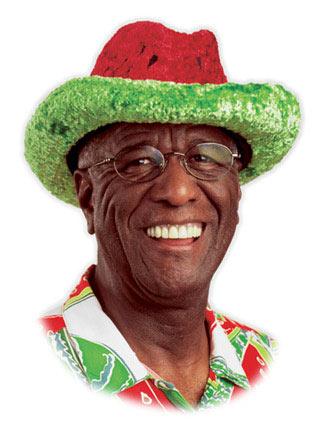The title explains itself. Here it is:
Define the following words:
Microprocessor-CPU. Determines processing power for any and all programs.
Computer-Self explanatory. Used to surf the internet, play games, run programs such as Microsoft Word.
CPU-Microprocessor. Determines processing power for any and all programs.
Memory-Where files and programs are saved. Duh.
RAM-Random Access Memory. “Main” memory. Determines how quickly and efficiently a computer runs
ROM-Read only memory. Main role in distribution of firmware, not likely to need frequent upgrading.
Cache-collection of data duplicating original values stored elsewhere/computed earlier. Used to easily access files that are difficult to access from elsewhere
Virtual Memory-Permits software to use more main memory than the computer actually possesses
Motherboard-primary circuit board in a computer, sometimes abbreviated as “mobo”
Power Supply-the cord that plugs into the wall.
Hard Disk-non-volatile storage, stores data on a magnetic surface which is layered onto hard disk platters
Operating System-system software responsible for direct control of hardware and basic operations.
Windows-Proprietary closed source software. It is a range of operating environments for personal computers, introduced in 1985. Used for about 95% of PCs.
Mac OS-Apple’s name for the first operating systems for Macs. First commercially successful Operating System, used a graphical user interface.
Linux-Open source operating system. Underlying source code available to the public.
Sound Card-Makes the pretty sounds. Typically includes sound chip w/digital to analog converter. Advanced designs feature multiple sound chips.
Graphics Card-designed to convert logical representation of an image stored in memory to an image that can be “read” by and displayed on the monitor.
Accelerated (or advanced) Graphics Port (AGP)-attaches a graphics card to a motherboard. Primarily assists in acceleration of 3D graphics, like those found in videogames.
PCI Express Slot-Implementation of PCI computer bus, uses existing PCI programming concepts, just a lot faster. It is phasing out AGP.
Monitor-The thing that holds the screen.
Keyboard-The thing you use to type on the screen.
Mouse-The thing you use to click on Icons/Links on the screen.
Removable Storage-Disks, ROM drives like those below.
Floppy disk-Circular piece of thin magnetic storage medium encased in plastic, read and written by a FDD
CD-ROM -Abbreviation for Compact Disc Read-only memory. Non-volatile storage mediums. Flat, metallized plastic disc, information encoded in a spiral from center to outside edge.
DVD-ROM-Digital Versatile Disc Read-only memory. It’s an optical storage mmedia format, used for data storage. (Usually movies). They’re encoded in a different format, and at a higher density. MUST CONTAIN A FILE SYSTEM.
Flash Memory-allows several memory locations to be erased in one programming operation. (Rewritable memory, needs no power source to hold its information.)
Zip Disk-Medium capacity removable dick storage, introduced by Iomega in 1994. Performs faster than standard floppy disk.
Ports-Connection that data is sent through, so that you can move information, or connect an outside machine, like a printer or iPod.
Parallel-bits are transmitted at the same time through two separate wires.
Serial-bits are transmitted consecutively on only one wire.
Universal Serial Bus (USB)-Standard for connecting devices. Usually for computers, but also used in PDAs, and gaming consoles, like the Nintendo Gamecube, and Sony’s Playststion 2 and Playstation Portable.
FireWire (IEEE 1394, i.Link)- PC and digital video serial bus interface standard, offers high speed communications. Almost all camcorders have FireWire ports, as do many Mac and Sony computers. The iPod also uses FireWire to upload tracks.
Internet-World wide web, it’s an extensive computer network available to the public. Transmits data using an internet protocol (IP) that’s standardized.
Network-Variety of systems of interconnected components.
Modem-(MODulator and DEModulator). Modulates a sound to encode digital information, also demodulates a carrier signal to decode transmitted information.
Local area network (LAN) card-Network covering a local area. Using Ethernet to wire the computers to a hub/switch, which constitutes the physical layer. A spanning tree protocol used to maintain a loop-free network.
Cable Modem-Modem designed to modulate data signal over cable TV infrastructure.
Digital Subscriber Line (DSL) modem-Technologies that provide a digital connection over copper wires of local phone network.
Very high bit-rate DSL (VDSL) modem-xDSL technology providing data transmission to a theoretical limit of 52 Mbits per second downstream, and 12 mbits/s up over 1 twisted pair of wires.
BIOS(basic input-output system)- originally describes part of CP/M loaded during boot time. (back in the DOS days)
bootstrap loader-loads operating system into memory, allows operation.
bit-0 or 1
byte-8 bits
kilobyte-1,024 bytes
megabyte-1,048,576 bytes
gigabyte-1,073,741,824 bytes
So, there it is. That's an outline that we did the first couple days of class. Feel free to visit my other, more interesting blog
here.
